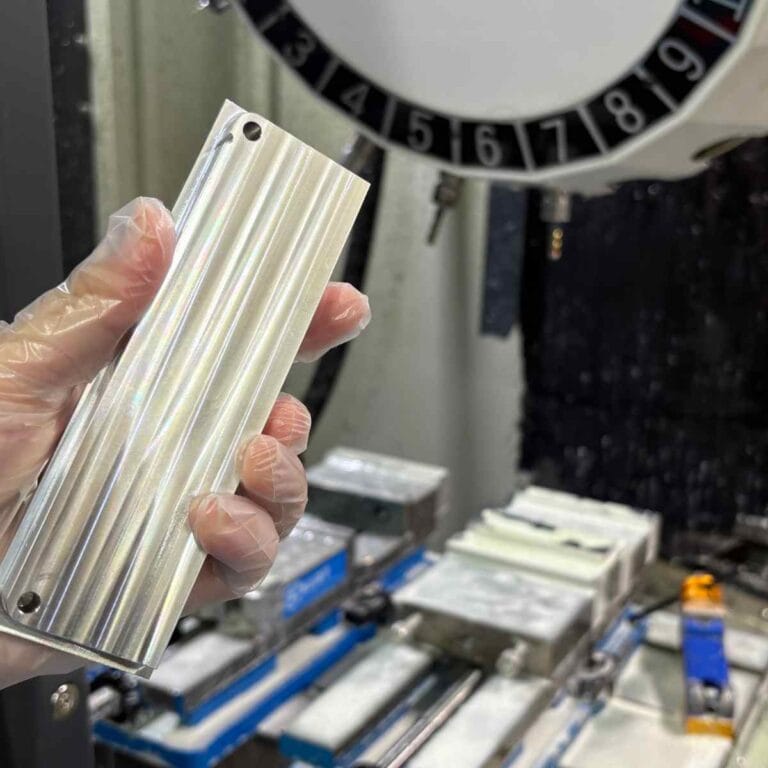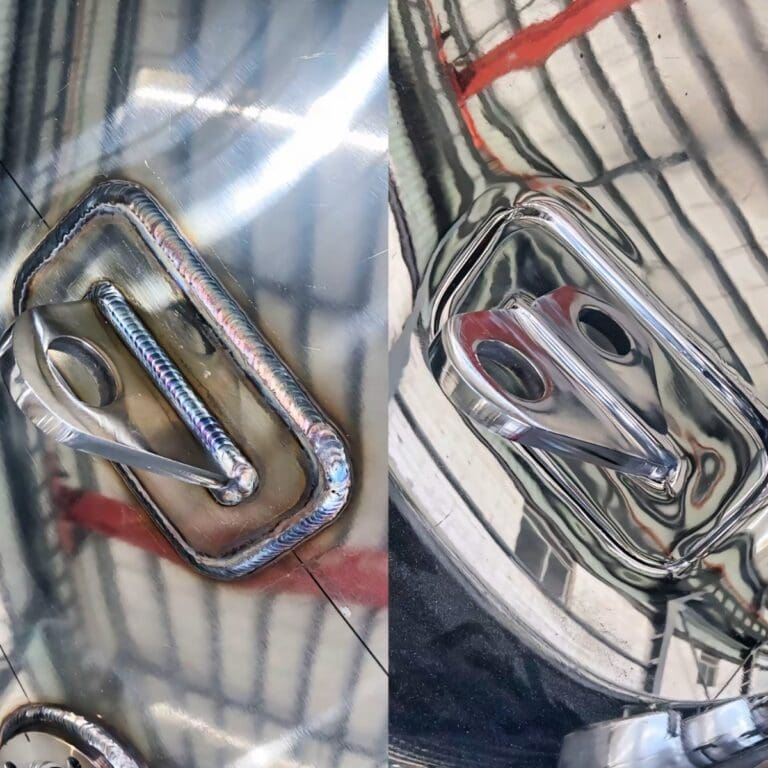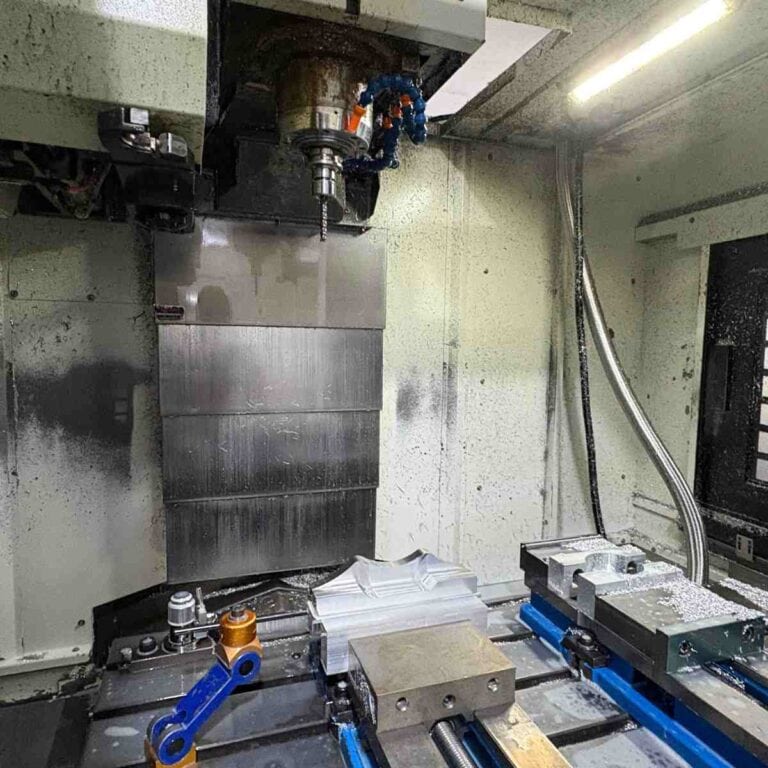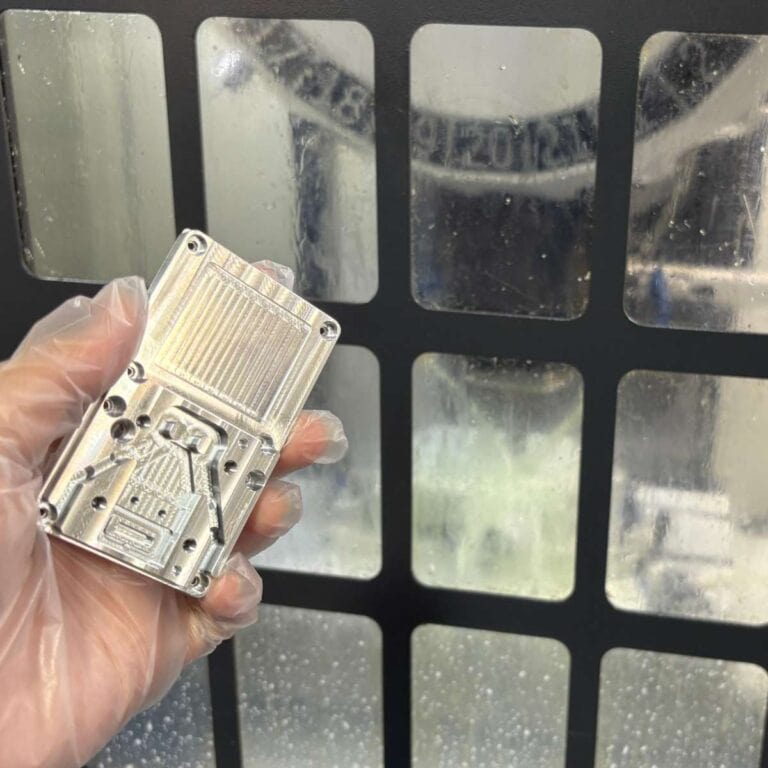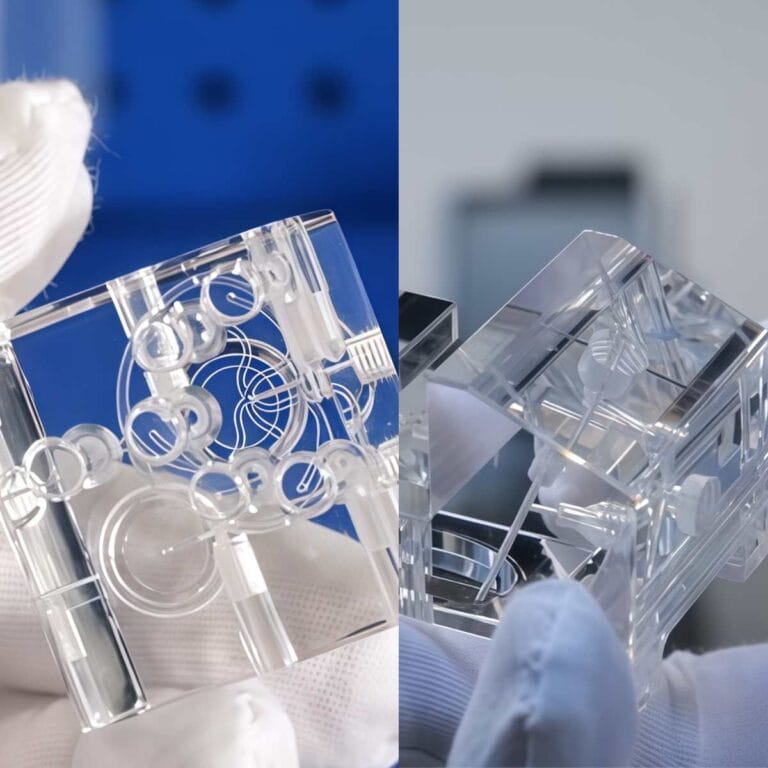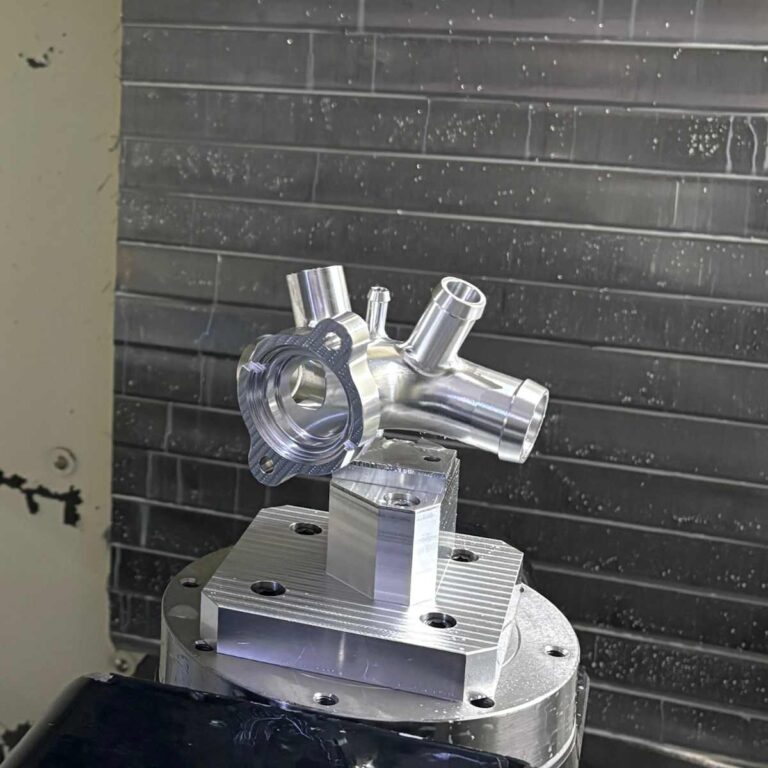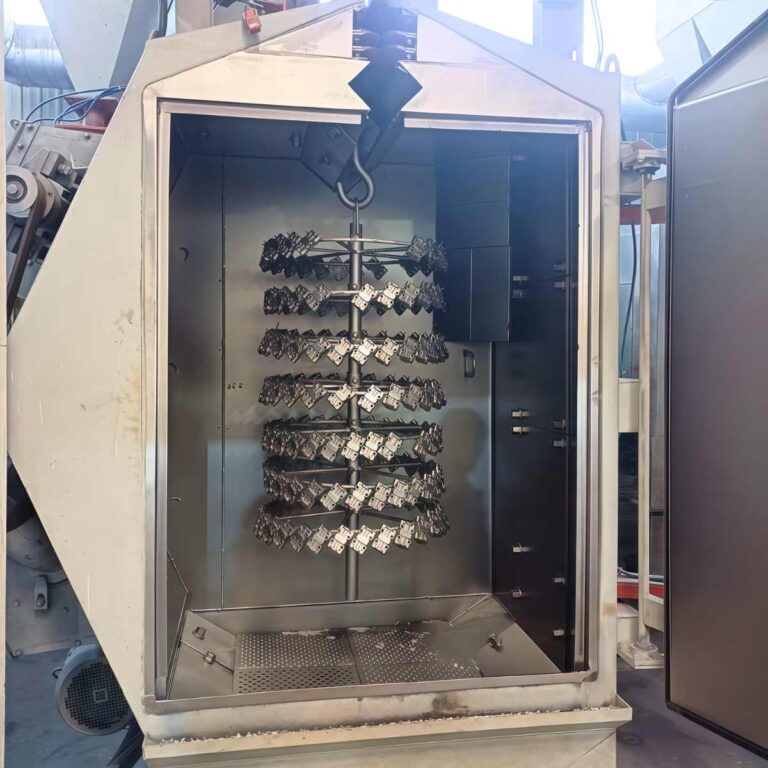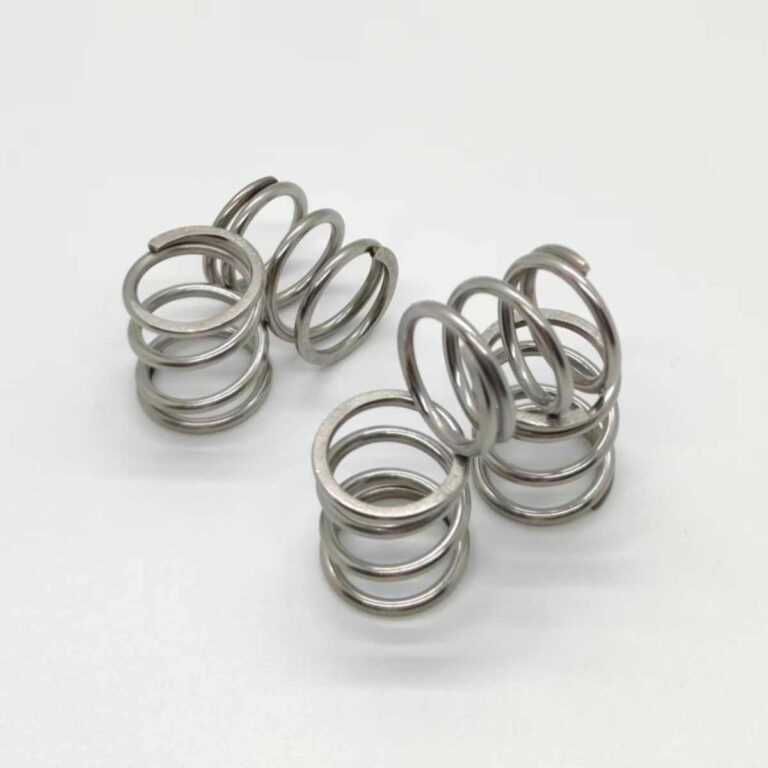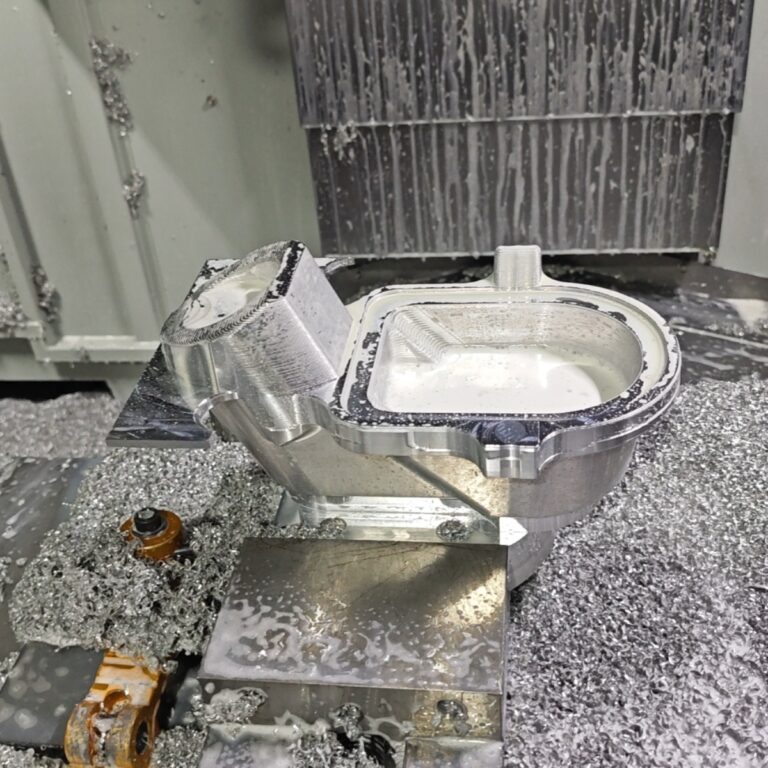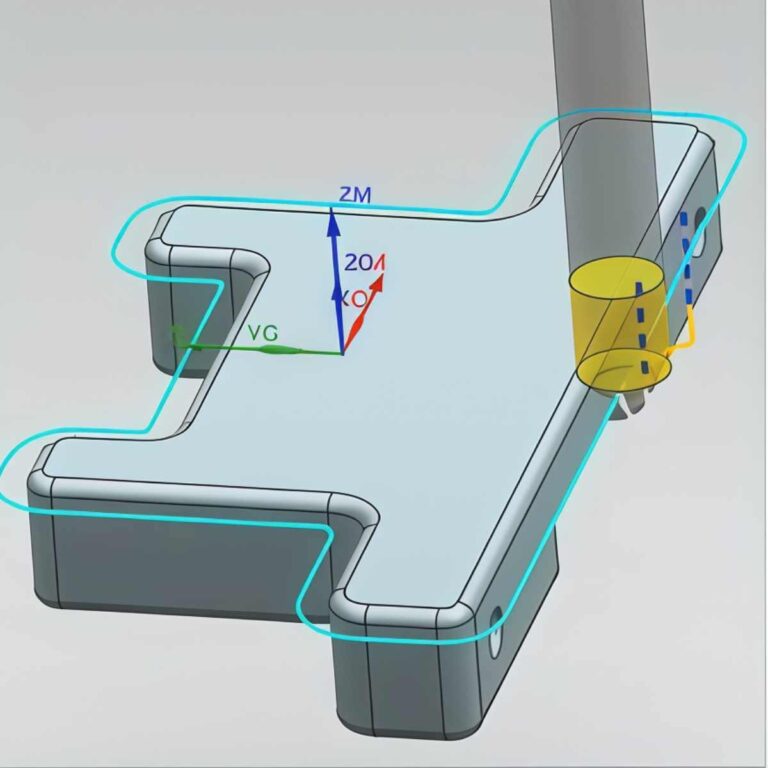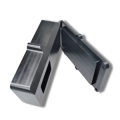In modern manufacturing, CNC robotics has become the bridge connecting high-precision machining and automated production. By deeply integrating with CNC machines, these robots enable manufacturers to achieve superior accuracy, efficiency, and flexibility. Compared to traditional CNC machining, CNC robots handle more tasks—loading, welding, inspection, and assembly—and are a key pillar in digital transformation. In this article, I’ll walk you through their principles, technologies, applications, benefits, and challenges.
What Is CNC Robotics
CNC Robotics combines CNC and robotics technologies to create automated systems capable of high-precision machining, material handling, and assembly. Unlike traditional CNC machines limited to 3–5 axes, CNC robots feature 6 or more degrees of freedom, enabling complex movements and greater flexibility. Integrated with CAD/CAM software, they automatically generate tool paths and execute tasks without manual intervention, supporting fully automated production workflows.
Working Principle·
CNC robots operate as highly integrated systems that rely on advanced controllers to interpret and execute NC (Numerical Control) programs with exceptional accuracy. These controllers process thousands of lines of G-code instructions, converting them into coordinated movements across multiple axes—often six or more degrees of freedom. For example, a typical articulated robotic arm can position its end effector within ±0.05 mm repeatability, enabling it to perform complex spatial maneuvers that traditional CNC machines cannot easily replicate.
In practice, these robots are connected directly to CAD/CAM platforms such as Siemens NX or Autodesk Fusion 360, which automatically generate optimized tool paths from 3D solid models. The CAD/CAM software defines cutter geometry, feed rates, spindle speeds, and simulates the entire machining process in a virtual environment to prevent collisions and ensure optimal material removal strategies.
Once the NC program is transmitted, the robot’s motion controller synchronizes all joints to move in precise trajectories. Many systems enable the entire workflow—from picking up raw billets, accurately placing them in fixtures, machining, deburring, and transferring finished parts—to run autonomously for up to 16 hours continuously. This combination of real-time feedback loops, adaptive speed control, and intelligent path correction allows CNC robots to maintain high productivity and consistent quality across large production batches.
Differences From Traditional CNC Machining
In my experience working with both technologies, the distinctions between CNC robots and traditional CNC machines are clear, measurable, and impactful on production efficiency. CNC robots typically feature 6 or more degrees of freedom, often utilizing articulated arm designs with rotational joints that allow for complex, spatial motion around the workpiece. This contrasts with conventional CNC machining centers, which are usually limited to 3 to 5 fixed axes—X, Y, Z linear movements, and sometimes additional rotary axes (A and B) for indexing. For example, a 6-axis robot can reach into cavities or around fixtures from multiple orientations, while a 3-axis CNC mill is constrained to working from a single plane unless re-clamping is performed.
Another notable difference is workflow automation. Traditional CNC machines often require manual intervention to load and unload raw materials, inspect parts, or clear chips between cycles. In a typical setup, this can introduce 10–15 minutes of idle time per job changeover, especially in high-mix production. By contrast, CNC robots can automate these steps entirely. I’ve overseen installations where robots perform unattended material handling, fixture cleaning, and even inline measurement with machine vision, reducing downtime by up to 40% and enabling continuous operation for shifts exceeding 12 hours without human supervision.
Regarding precision, traditional CNC machines generally maintain a higher level of repeatability and positional accuracy. High-end machining centers can consistently achieve tolerances of ±0.002 mm (2 microns) when cutting hardened steel or aerospace alloys. In comparison, industrial robots usually offer positioning repeatability within ±0.02–0.05 mm, depending on payload and reach. However, robots excel in multi-tasking versatility. For instance, a single robot can switch between machining, welding, and palletizing tasks with minimal reconfiguration, whereas a CNC machine is optimized for a specific process. This flexibility makes CNC robotics especially valuable for manufacturers that need to adapt to frequent product changes or produce smaller batches of highly varied components.
Key Technologies In CNC Robotics
CNC robotics integrates robotic arms, machine vision, and AI-driven adaptive control to enable smart, flexible manufacturing. For example, combining KUKA robots with Haas CNC machines reduced cycle times by 25%. SCARA, articulated, and collaborative robots each offer unique strengths, from assembly to complex machining. Advanced technologies like Cognex vision systems and AI algorithms ensure precise, efficient production.
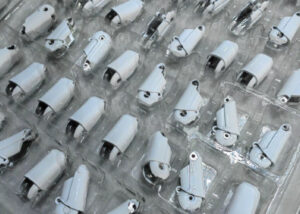
Integration Of Robotic Arms With CNC Systems
On advanced production lines, KUKA KR series robotic arms have been integrated with Haas VF-series CNC machining centers to streamline workflows and minimize manual intervention. This integration establishes robust communication between the robot controller and the CNC machine via Siemens PLCs using Profinet protocols. The robot receives real-time machine status signals—such as cycle start, cycle complete, and emergency stop—allowing fully synchronized operation without human prompts.
For example, the robot pre-positions raw billets within ±0.02 mm of the CNC fixture while simultaneously clearing chips and debris from the previous part to ensure clean, repeatable loading conditions. Once the CNC machine signals readiness, the robot automatically inserts the workpiece and closes the vise. At the end of each machining cycle, it removes the finished component and places it onto an outbound conveyor while preparing the next blank.
In practice, this integration has reduced average cycle time per part from 15.5 minutes to 11.6 minutes—a 25% productivity improvement—on production runs of 3,000 aluminum housings. Machine utilization rates increased to over 90% by eliminating idle periods during operator shift changes and breaks. Data logging also showed that scrap rates decreased by approximately 8% due to consistent, error-free part handling and automated verification of correct orientation before machining began.
Common Types Of CNC Robots
| Type of CNC Robot | Key Features | Typical Applications |
| SCARA Robots | – High-speed horizontal motion- 4-axis structure- Excellent precision | Assembly, material handling, dispensing, packaging |
| Articulated Robots | – Multiple joints (6 or more axes)- High flexibility- Reach complex spatial positions | Cutting, welding, grinding, complex trajectory machining |
| Cartesian (Gantry) Robots | – Linear movement in X/Y/Z axes- High rigidity- Strong payload capacity | Large workpiece handling, drilling, laser/waterjet cutting |
| Delta Robots | – Parallel triangular structure- Ultra-high-speed motion- Lightweight payloads | Fast picking, assembly, sorting |
| Collaborative Robots (Cobots) | – Safe human-robot collaboration- Integrated force/torque sensors- Simple programming | Small-batch assembly, machine tending, quality inspection |
| Cylindrical Robots | – Cylindrical coordinate system- Rotary and vertical movement- Compact footprint | Vertical loading/unloading, simple assembly, material handling |
Advanced Technologies
Machine Vision: Cognex machine vision systems are widely implemented for high-precision part identification, orientation, and verification. For example, in aerospace production lines, vision cameras with 5-megapixel resolution can achieve positional accuracy within ±0.02 mm, enabling robotic arms to pick and place components without operator intervention. Vision algorithms detect surface defects and verify barcode data for traceability, reducing inspection time by over 40%.
Artificial Intelligence: AI modules dynamically optimize machining operations by monitoring tool wear in real time. Integrated AI algorithms analyze spindle load patterns, vibration signals, and cutting forces, adjusting cutting parameters every 5 milliseconds. In documented applications, this approach has extended carbide tool life by 22% and reduced scrap rates to below 1.5%. Predictive models also learn from historical process data to fine-tune feeds and speeds based on material variability.
Adaptive Control: Adaptive control systems are essential for multi-material production environments. CNC controllers automatically adjust feed rates and spindle speeds based on in-process measurements, such as cutting force and temperature. When machining titanium alloys, adaptive adjustments have been shown to reduce cutting temperatures by 15–20°C, preventing thermal deformation. This capability ensures dimensional tolerances remain within ±0.005 mm even under fluctuating loads.
These advanced technologies—vision guidance, AI optimization, and adaptive control—collectively enhance accuracy, extend tool life, reduce manual intervention, and enable fully autonomous manufacturing workflows.
Applications Of CNC Robotics In Manufacturing
CNC robots enhance manufacturing by improving precision and efficiency. They achieve ±0.05 mm repeatability and enable 24/7 automotive production with 30% higher utilization. Robots handle 80 kg loads twice as fast, perform flawless welds, and automate complex assemblies with consistent accuracy.
Precision Advantages
In CNC robotics, precision is a fundamental requirement—especially in industries like aerospace, medical, and electronics where even minor deviations can lead to part rejection. Modern CNC robots routinely achieve repeatability within ±0.05 mm, and with advanced calibration, certain systems can maintain accuracy down to ±0.02 mm.
For example, in aerospace tooling projects involving 7075 aluminum, robotic systems have been used to machine complex contoured surfaces with dimensional deviations consistently below 0.13%, well within the 0.2% tolerance threshold.
Machine vision integration further enhances accuracy, improving edge profiling precision by up to 28% compared to traditional fixture-based setups. While ultra-precision CNC machines can reach tolerances of ±0.002 mm, CNC robots offer sufficient accuracy for over 80% of industrial machining tasks—especially when multiple angles, compound curves, or hybrid functions are involved.
This balance of precision and flexibility makes CNC robotics highly suitable for automated production environments that require both quality and adaptability.
Role In Automated Production Lines
In modern manufacturing environments, the integration of CNC robots with machining centers has significantly enhanced production efficiency and equipment utilization. For example, in automotive factories, robotic systems using six-axis arms are commonly connected to three-axis CNC milling machines, enabling fully automated 24/7 continuous operations.
Prior to automation, average equipment utilization typically remained around 52% due to manual loading delays, shift transitions, and downtime between operations. With robotic automation handling material loading, tool changes, and part unloading, utilization rates can rise to over 82%—a documented improvement of approximately 30%.
In many setups, a single robotic arm with automated gripper exchange can service multiple CNC machines, managing parts of varying sizes. These systems often incorporate PLCs and Manufacturing Execution Systems (MES) to coordinate robot movements with real-time production demands, significantly reducing idle time and improving workflow synchronization.
Beyond improving output, robotic integration also enhances consistency and repeatability, stabilizing production quality while reducing human error. This results in shorter takt times, more predictable delivery schedules, and an overall increase in manufacturing competitiveness.
Material Handling, Welding, And Assembly
Material Handling:
CNC robots are widely used for automated material transfer, especially in high-throughput environments. For instance, six-axis robots equipped with vacuum grippers or mechanical claws can handle aluminum billets weighing up to 80 kg, achieving transfer speeds up to 1.8 m/s. Compared to manual operations, robotic handling systems are typically 2–2.5 times faster, reducing loading/unloading time by up to 60%. Moreover, consistent cycle timing eliminates human fatigue and error, ensuring steady takt times across shifts.
Automated Welding:
In sectors like aerospace and automotive, robotic welding systems maintain superior consistency. Advanced CNC welding robots can deliver repeatable weld paths with ±0.1 mm accuracy, regardless of weld length or complexity. Using integrated arc sensors and seam tracking, these robots dynamically adjust welding parameters in real time, minimizing spatter and porosity. Compared to manual welding, defect rates can be reduced by 40–50%, while production speed increases by 30–35%, especially in multi-joint applications.
Assembly:
CNC robotic arms equipped with vision systems and adaptive tooling can perform precise assembly of complex components. In electronic and mechanical systems, these robots manage multi-stage part positioning, fastening, and alignment with repeatability down to ±0.02 mm. The use of flexible fixtures allows a single robot to switch between multiple part types without retooling, reducing setup time by up to 70%. Automated assembly also enables real-time traceability, quality control, and statistical process monitoring (SPC) integration.
CNC Robotics vs Traditional CNC Machining
CNC robotics and traditional CNC machining meet different manufacturing needs. CNC machines offer superior accuracy down to microns, while robots provide flexibility for multi-process workflows. Though robotics require higher upfront investment, they can reduce labor costs by 35% over five years. Choosing the right system depends on precision, workflow demands, and budget.
Accuracy And Flexibility
Traditional CNC machines are renowned for their ultra-high precision, commonly achieving tolerances within ±0.002 mm. This level of micrometer-scale accuracy makes them the preferred choice for applications where dimensional conformity is critical—such as aerospace turbine blades, medical implants, and high-precision molds. In contrast, CNC robots typically achieve repeatability in the range of ±0.05 mm to ±0.1 mm, which is sufficient for a wide range of industrial tasks but not ideal for ultra-tight tolerances.
However, CNC robots offer unmatched flexibility. With 6 or more degrees of freedom, they can perform complex spatial movements and adapt quickly to various tasks such as milling, drilling, deburring, assembly, and even non-machining operations like painting or inspection. Their reprogrammable nature and ability to switch tools via end-effectors make them highly suitable for dynamic production environments or small-batch, high-mix manufacturing lines.
Scope And Limitation
Traditional CNC machines are optimized for fixed-path, high-precision operations, such as contour milling, surface finishing, and hole drilling in aerospace and mold-making industries. They are highly rigid and purpose-built, which allows them to maintain tight tolerances—often within ±0.002 mm—over long production runs. However, this rigidity also limits their scope: changing part designs or machining functions typically requires manual intervention, reprogramming, and fixture adjustments, which increases downtime and setup costs.
In contrast, CNC robotics systems are built for versatility and adaptability. With 6 to 7 degrees of freedom and modular end-effectors, robots can be reconfigured to perform different tasks—such as milling, inspection, palletizing, or screwdriving—on the same production line. They are ideal for high-mix, low-volume environments or job shops where products frequently change. Although their machining precision is lower—typically in the range of ±0.05–0.1 mm—they compensate with flexibility, reducing changeover time by up to 70% and enabling fast reprogramming via offline simulation or plug-and-play interfaces.
Performance And Cost-Effectiveness
In terms of performance, traditional CNC machines generally outperform in machining accuracy and repeatability, especially in applications requiring tolerances tighter than ±0.005 mm. Their cycle times are consistent, but productivity is often limited by manual operations such as material loading and unloading. On the other hand, CNC robotics systems excel in automation throughput. When integrated with vision systems and automated fixtures, robots can operate 24/7 with minimal human supervision, increasing overall equipment effectiveness (OEE) by up to 30–40%.
From a cost perspective, the initial capital investment for deploying CNC robots—including robotic arms, controllers, safety systems, and integration—can be 30–50% higher than traditional CNC setups. However, long-term operational savings are significant. Studies and field data show that robotic automation can reduce direct labor costs by 25–40% over a 5-year period, especially in high-labor environments such as parts sorting, tool changes, or secondary operations like deburring.
Moreover, robotic cells enhance predictive maintenance and uptime, reducing unplanned downtime by as much as 20% when paired with condition monitoring systems. While payback periods vary by industry and workload, many CNC robotics deployments achieve ROI within 24 to 36 months, particularly in automotive, electronics, and medical device sectors where demand is continuous and product variation is high.
Advantages And Challenges Of CNC Robotics
CNC robotics delivers faster production, higher precision, and greater flexibility—boosting throughput by up to 30% and enabling real-time adjustments. However, challenges include high initial costs ($200,000–$500,000), complex system integration, and ongoing maintenance demands requiring skilled personnel and regular updates.
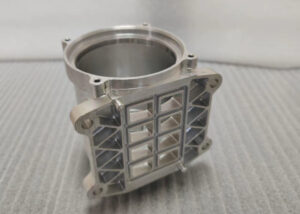
Advantages
Faster Production: CNC robotics systems enable continuous, unattended operation—especially when integrated with automated loading/unloading stations and tool changers. In industrial applications such as automotive and electronics manufacturing, robotic CNC cells have shown to increase production throughput by 25–30% compared to semi-automated setups. This is largely due to the elimination of idle time between operations and reduced manual handling.
Improved Precision: Advanced robotic systems often integrate real-time machine vision and adaptive control algorithms, which dynamically correct positioning errors or tool wear deviations during machining. For example, when paired with high-resolution vision systems (up to 5 MP or more), robots can automatically align parts with a positional accuracy of ±0.02–0.05 mm, significantly improving consistency and minimizing scrap rates in complex assemblies.
Enhanced Flexibility: Unlike traditional CNC setups that require physical fixture changes and manual reprogramming, robotic systems support rapid tool switching and software-defined workflows. A single robotic cell can switch between drilling, polishing, and deburring within seconds using automatic tool changers and preloaded routines. This level of flexibility makes CNC robotics particularly advantageous for high-mix, low-volume production environments, shortening changeover time by up to 70% and enabling faster response to customer-specific customization.
Challenges
High Upfront Costs: Implementing a CNC robotics system typically involves substantial capital expenditure. Depending on the configuration—robotic arm type, CNC machine compatibility, end-effectors, safety enclosures, and integration software—the total system cost ranges from $200,000 to $500,000 USD. In sectors requiring high precision or cleanroom compliance (such as aerospace or medical device manufacturing), this cost may rise by another 15–20% due to stricter equipment and validation requirements.
Complex Integration: Unlike standalone CNC machines, robotic systems demand seamless communication between robot controllers, CNC interfaces (e.g., FANUC, Siemens), PLCs, and vision systems. This requires cross-disciplinary expertise in automation engineering, robotics programming (e.g., RAPID, KRL, URScript), and system architecture. On average, commissioning a new robotic-CNC cell takes 4–8 weeks, including safety verification, I/O mapping, and trial runs. Improper integration may lead to cycle time inefficiencies or even equipment collisions.
Maintenance Needs: To maintain high uptime and consistent performance, CNC robotic cells require routine mechanical calibration, sensor alignment, and software updates (e.g., firmware patches, path optimization algorithms). Predictive maintenance systems using vibration analysis or thermal sensors can reduce unexpected failures by up to 20%, but still need trained technicians. Manufacturers must schedule weekly inspections and quarterly diagnostics, and budget 3–5% of the system cost annually for preventive maintenance and support contracts.
How To Choose The Right CNC Robot
Choosing the right CNC robot involves assessing key factors such as payload capacity, speed, and system compatibility. These directly impact cycle times, integration efficiency, and production goals. Depending on the application, articulated robots are suited for complex machining, collaborative robots offer safe human interaction, and SCARA robots excel in high-speed precision tasks like assembly and part handling.
Selection Criteria
Payload Capacity: Choosing a CNC robot with the appropriate payload rating is crucial to ensure stability, accuracy, and longevity. For instance, a robot handling heavy metal billets or tool heads must have a payload capacity at least 20–30% higher than the actual load to account for acceleration forces and end-effector weight. Industrial robotic arms typically range from 5 kg to 200 kg payload, with models like the KUKA KR 210 and FANUC M-2000 designed for heavy-duty lifting.
Speed: Robotic speed directly influences production efficiency. Measured in mm/s or degrees/s, faster cycle times reduce machine idle time. High-performance industrial robots can achieve repeatable path speeds of 2000–3000 mm/s. However, for precision-critical tasks, slower controlled movement may be preferable to reduce vibration or positioning error.
Compatibility: Seamless integration with CNC systems requires both hardware interface compatibility (e.g., EtherCAT, Profinet, Modbus-TCP) and software-level communication with CNC controllers (e.g., Siemens 840D, FANUC, Haas). Compatibility issues can lead to signal delays, synchronization failures, or inefficient tool handovers. Advanced robot-CNC integrations use centralized control via PLCs or dedicated middleware, which allows for synchronized motion control and automated toolpath execution based on shared CAD/CAM data.
Choosing The Right Robot For The Application
Articulated Robots: These robots feature 6 or more axes of freedom, enabling complex spatial movements ideal for CNC operations involving irregular contours, undercuts, or compound angles. They are commonly used in multi-axis milling, trimming, and deburring tasks where the tool must access multiple faces of a part. For example, a 6-axis FANUC M-710iC can handle payloads up to 70 kg with repeatability of ±0.03 mm, making it suitable for intricate aerospace components or automotive die molds.
Collaborative Robots (Cobots): Designed with safety-rated sensors and force-limiting joints, cobots can operate directly alongside human workers without traditional safety fencing. They are ideal for CNC loading/unloading, screwdriving, and inspection tasks in high-mix, low-volume environments. Popular models like Universal Robots UR10e offer payloads up to 12.5 kg, with positional repeatability of ±0.05 mm, and can be programmed in under 30 minutes using intuitive teaching interfaces—making them perfect for flexible job shops.
SCARA Robots: With 4 degrees of freedom, SCARA (Selective Compliance Articulated Robot Arm) robots are optimized for high-speed, planar tasks such as part transfer, packaging, or fastener placement. Their design allows horizontal flexibility but maintains vertical rigidity, achieving speeds up to 8000 mm/s with precision around ±0.01 mm. SCARA robots are often integrated into CNC cells for secondary processes like part orientation or tray loading in electronics and medical device manufacturing.
Applications Of CNC Robotics
CNC robotics is widely used in industries like automotive, aerospace, and medical devices to perform tasks such as welding, milling, and assembly. With robot types like articulated and SCARA arms, manufacturers achieve faster cycle times, reduced labor costs, and high precision—up to ±0.005 mm in optics and ±0.02 mm in aerospace parts—enhancing both efficiency and product quality.
| Industry | Applications | Robot Types | Key Benefits |
| Automotive | Welding, assembly, part handling, fastening | Articulated, SCARA, Collaborative | 30–60% faster cycle time, consistent quality |
| Aerospace & Defense | Milling composites, drilling, riveting structural parts | 6-axis articulated, gantry robots | ±0.02 mm precision, reduced manual effort |
| Medical Devices | Implant machining, surgical tool polishing, assembly | Collaborative, high-precision 6-axis | Micron-level accuracy, cleanroom capable |
| Consumer Electronics | Frame drilling, shell milling, high-speed assembly | SCARA, Delta, Collaborative | Fast switching, high-volume flexible runs |
| Industrial Equipment | Heavy part machining, robotic welding, part loading | Articulated, AGV-integrated systems | Labor cost reduction, optimized workflow |
| Precision Optics | Lens housing turning, optical fixture machining, automated inspection | High-precision articulated robots | ±0.005 mm tolerance, stable repeatability |
| Mold Making | Core/cavity machining, mold handling, electrode finishing | Articulated, CNC-integrated robots | Reduced changeover, higher mold accuracy |
FAQs
What Is The Difference Between CNC Mill And Robotic Arm?
From my experience, the key difference lies in structure and function. A CNC mill is a rigid, high-precision machine—ideal for subtractive tasks like milling and drilling, often achieving ±0.005 mm tolerance. In contrast, a robotic arm offers greater flexibility with 6+ degrees of freedom, making it suitable for multi-task operations like pick-and-place, welding, or light machining. However, its positional accuracy is typically lower—around ±0.05 mm—unless enhanced with vision systems.
What Is A CNC In robotics?
In robotics, CNC refers to the use of Computer Numerical Control to guide robotic arms with precise, pre-programmed movements. I’ve worked on systems where CNC robots execute complex machining paths using G-code, similar to CNC mills, but with up to 6 or 7 axes. These robots can handle tasks like trimming, drilling, or routing with repeatability of ±0.05 mm, especially when integrated with CAD/CAM and vision systems for adaptive control.
Is A Robotic Arm Suited To Use For CNC Milling Of Components?
Yes, a robotic arm can be used for CNC milling, especially for large or complex parts. I’ve worked on setups where 6-axis robotic arms handled freeform surfaces with ±0.1 mm accuracy. While they don’t match the stiffness or ±0.002 mm precision of traditional CNC mills, they excel in flexibility, reach, and multi-angle tool paths—ideal for trimming composites, large molds, or when space constraints exist.
How To make A CNC Robotic Arm?
To make a CNC robotic arm, begin by selecting 4–6 axis servo motors for precise movement. Design the arm using materials like aluminum or carbon fiber for optimal strength-to-weight performance. Integrate a motion controller such as Siemens or Fanuc, and use CAD/CAM software to generate tool paths and G-code. Proper calibration enables the arm to achieve repeatability within ±0.05 mm.
How Is Robotics Used In The Automotive Industry?
In the automotive industry, robotics is used for welding, assembly, painting, and material handling. I’ve seen 6-axis robotic arms reduce welding cycle times by 40%, while collaborative robots streamline dashboard assembly with ±0.05 mm precision. Automated guided vehicles (AGVs) also optimize logistics, enabling just-in-time part delivery and improving overall plant efficiency.
Conclusion
CNC robotics is redefining the landscape of modern manufacturing. By integrating robots with CNC equipment, manufacturers can dramatically improve speed, quality, and operational agility. Although challenges remain, I firmly believe that thoughtful planning and the right technology choices will allow any factory to unlock the full potential of smart manufacturing. If you’re considering investing in CNC robotics, start by defining your needs and move step by step toward a more efficient future.


